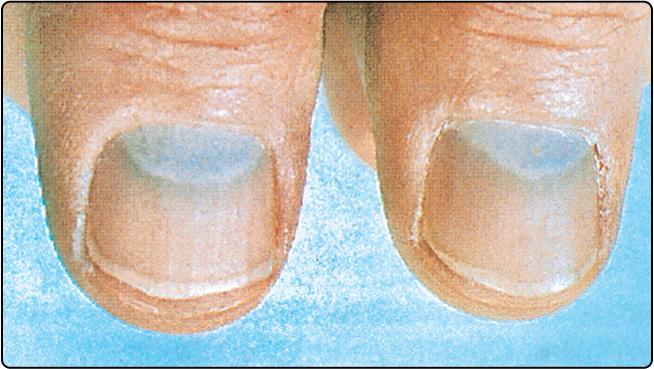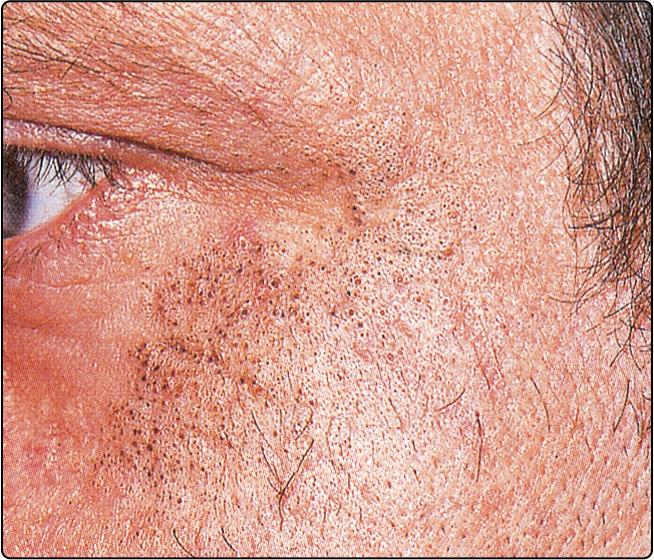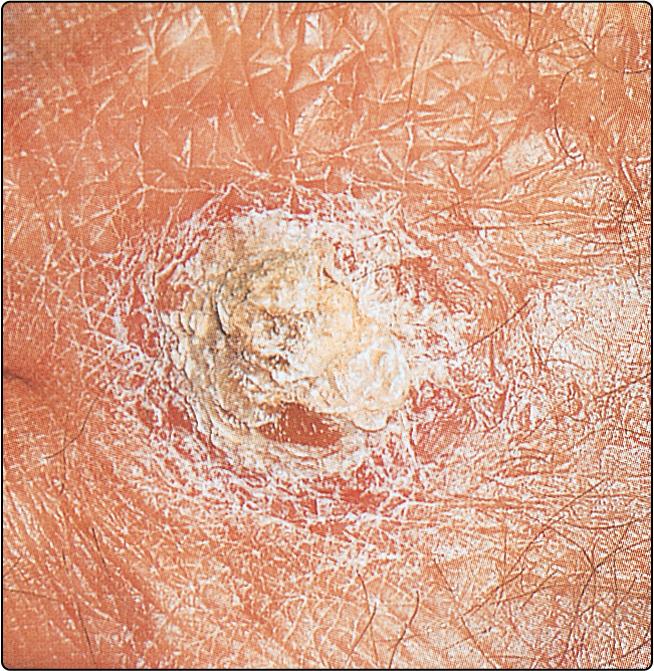Physical Address
304 North Cardinal St.
Dorchester Center, MA 02124
Skin disorders, after stress and musculoskeletal problems, are the commonest reported cause of occupational disease and are responsible for much lost productivity. An occupational dermatosis is defined as a skin condition that is primarily due to components of the work environment and would not have occurred unless the individual were doing that job.
Proving a work association can be difficult. The following give clues:
Contact with a known noxious agent
Similar skin disease in other workers
Consistent exposure-to-onset time course
Attacks appear with exposure, improve on withdrawal
Site and type of eruption consistent with exposure
Corroboration by patch testing.
Contact dermatitis is the most common work-related skin disease and is more often irritant than allergic. Contact urticaria, particularly to latex, is now well recognized. Other occupational dermatoses are listed in Table 74.1 . Certain infections, e.g. anthrax (p. 64), orf (p. 66) and tinea corporis (p. 72), may be occupational. Heat, cold, ultraviolet radiation, vibration and X-rays can cause industrial disease.
| Condition | Presentation | Occupational exposure |
|---|---|---|
| Argyria ( Fig. 74.1 ) | Slate-grey pigmentation on face, hands, sclerae | Industrial processes, e.g. silver smelters |
| Chloracne ( Fig. 74.2 ) | Multiple open and closed comedones on cheeks and behind ears | Halogenated aromatic hydrocarbons, e.g. contamination during manufacture |
| Occupational vitiligo (p. 92) | Symmetrical pigment loss on face and hands | Substituted phenols or catechols in oils, e.g. at coking plant |
| Tar keratoses ( Fig. 74.3 ) | Small keratotic warts on face and hand, premalignant | Tar and pitch, e.g. road work or coking plant; UV is a co-carcinogen |
| Vibration white finger (p. 88) | Blanching and pain in digits, later swelling and impaired fine movement | Hand-held vibrating tools, as used by rock drillers or chainsaw operators |
It is often difficult to differentiate between allergic and irritant causes.
Many industrial substances are irritants and some are also allergens (p. 48). Water, detergents, alkalis, coolant oils and solvents are important irritants. Common allergens include chromate, rubber chemicals, preservatives, nickel, fragrances, epoxy resins and phenol-formaldehyde resins ( Table 74.2 ).
| Occupation | Irritants | Allergens |
|---|---|---|
| Bakers | Flour, detergent, sugar, enzymes | Flavouring, oil, antioxidant |
| Building-trade workers | Cement, glass wool, acid, preservatives | Cement (Cr, Co), rubber, resin, wood |
| Caterers, cooks | Meat, fish, fruit, vegetables, detergent, water | Vegetables, fruit, cutlery (Ni), rubber gloves, spice |
| Cleaners | Detergent, solvent, water, friction | Rubber gloves, nickel, fragrance |
| Dental personnel | Detergent, soap, acrylate, flux | Rubber, acrylate, fragrance, mercury |
| Electronics assemblers | Solder, solvent, fibreglass, acid | Cr, Co, Ni, acrylate, epoxy resin |
| Hairdressers | Shampoo, bleach, perm lotion, soap, water, friction | Para-phenylenediamine dye, rubber, fragrance, thioglycolate |
| Metal workers | Cutting fluid, cleanser, solvent | Preservative, Ni, Cr, Co, antioxidant |
| Office workers | Paper, fibreglass, dry atmosphere | Rubber, Ni, dye, glue, copying paper |
| Textile workers | Solvent, bleach, fibre, formaldehyde | Formaldehyde resin, dye, nickel |
| Veterinarians, farmers | Disinfectant, animal secretion | Rubber, antibiotics, plants, preservative |
Irritant dermatitis frequently results from cumulative exposure to multiple types of irritant. An irritant dermatitis increases epidermal penetration by allergens and, because of this, it predisposes to superimposed contact sensitization. Similarly, allergic contact dermatitis renders skin vulnerable to attack by irritants.


Constitutional factors, especially atopic eczema, predispose to contact dermatitis. Environmental factors such as physical friction, occlusion, heat, cold, dry air from air-conditioning or sudden swings in air temperature or humidity also have an effect.

Become a Clinical Tree membership for Full access and enjoy Unlimited articles
If you are a member. Log in here